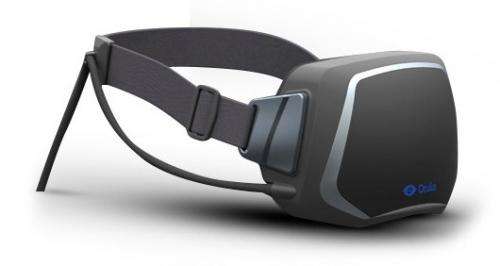June 28, 2014 weblog
Mozilla at work: See the web evolve with VR

Virtual reality for the web is about to get a significant push forward from Mozilla developers, they are working on prototype support for Oculus Rift in the Firefox browser. Peter Bright, technology editor, Ars Technica, noted that the initial prototype supports the Oculus Rift Developer Kit "to provide stereoscopic 3D output and lets scripts use the headset's orientation sensors for input." Mozilla's Vladimir Vukićević in a blog post Thursday titled "First Steps for VR on the Web" announced that "We are adding native support for VR devices to early experimental builds of Firefox, so that Web developers can start experimenting with adding VR interactivity to their websites and content. This is only the first of many steps that well be taking over the coming weeks and months."
Vukićević is Mozilla engineering director in charge of gaming and special projects. Writing in CNET on Friday, Steven Shankland said that "Mozilla programmers have begun a project to adapt the Web for virtual-reality interfaces such as the Oculus Rift, starting with test versions of its own Firefox browser."
Their support work is focused on Oculus Rift but you can expect other devices to follow. He said that "Over the coming weeks, I'll be expanding the scope and support of VR in the Web platform."
He also reported another player in this VR effort, Mozilla's Josh Carpenter who has been working in design for interaction, mobile and motion for over 10 years. He said Carpenter will work at the problem from a user experience and design angle, to figure out what some best practices might be for bringing VR to Web content.
While the instant thought about virtual reality is in terms of video games, the Mozilla vision suggests virtual reality as an expanded way of experiencing the Web. The impetus for this project started with some what-if questions. In his blog, Vukićević asked, "could we not expand the Web to include the immersive elements of a fully three-dimensional virtual universe?" The Web, he commented, "is a vibrant, connected universe where many different types of experiences can be created and shared. People can be productive, have fun and learn all from within their browser."
According to Vukićević, the technical vision for VR on the Web includes: Rendering Canvas (WebGL or 2D) to VR output devices; rendering 3D Video to VR output devices; rendering HTML (DOM+CSS) content to VR output devices; mixing WebGL-rendered 3D Content with DOM rendered 3D-transformed content in a single 3D space; and receiving input from orientation and position sensors, with a focus on reducing latency from input/render to final presentation.
He provided links for Windows and OS X builds in his blog, and he said Linux is coming soon. Although only the Oculus Rift is currently supported, other devices, he said, will come soon, including Google's Cardboard.
This is an early preview build of work-in-progress code, he added. It is intended for developers looking to experiment with VR on the Web. One can report any VR issues to him. He provided his GitHub contact information in his blog. "Once the code is merged into the main repository, bugs will be tracked using Bugzilla as usual. Expect bugs and crashes, which are part of the fun!"
More information: blog.bitops.com/blog/2014/06/2 … s-for-vr-on-the-web/
© 2014 Tech Xplore




















